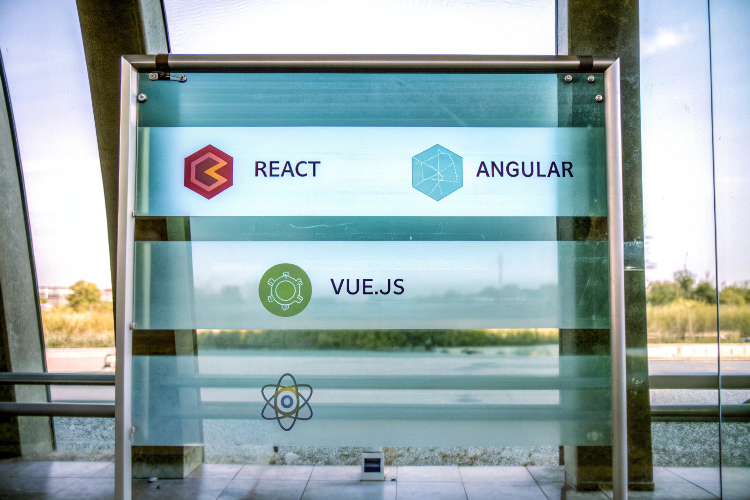Blog
The Best Web Development Frameworks for 2025.
Web Development & Design ▪ 2025-03-07

As the digital landscape continues to evolve, choosing the right web development framework is crucial for building robust, scalable, and high-performance websites and applications. With advancements in artificial intelligence, cloud computing, and modern front-end and back-end technologies, developers need frameworks that are efficient, secure, and easy to maintain.
In 2025, several frameworks stand out due to their performance, flexibility, and developer support. Whether you're a front-end developer working on interactive user interfaces or a back-end engineer focused on scalable architecture, selecting the right framework can make or break your project. This guide explores the best web development frameworks for 2025, their features, and why they are leading the industry.
Top Front-End Frameworks in 2025
1. React.js
-
Why it’s popular: Developed by Facebook, React.js continues to dominate the front-end landscape with its virtual DOM and component-based architecture.
-
Key Features:
-
Reusable components for faster development
-
Strong community and extensive ecosystem
-
Seamless integration with Next.js for server-side rendering (SSR)
-
-
Best For: Single-page applications (SPAs), e-commerce, and dynamic web apps
2. Vue.js
-
Why it’s growing: Vue.js is lightweight, beginner-friendly, and offers reactive two-way data binding.
-
Key Features:
-
Progressive framework, easy to integrate into existing projects
-
Vue 3's Composition API enhances reusability and performance
-
Better state management with Pinia (alternative to Vuex)
-
-
Best For: Progressive web apps (PWAs), dashboards, and small to medium-sized applications
3. Angular
-
Why enterprises prefer it: Angular is backed by Google and offers a full-fledged framework with a structured architecture.
-
Key Features:
-
TypeScript-based for improved scalability
-
Built-in dependency injection and modularity
-
Strong CLI support for rapid development
-
-
Best For: Large-scale enterprise applications, CRM systems, and real-time applications
4. Svelte
-
Why it’s gaining traction: Unlike React and Vue, Svelte compiles components into efficient JavaScript at build time, reducing runtime overhead.
-
Key Features:
-
No virtual DOM, leading to better performance
-
Simpler syntax and learning curve
-
Lightweight and faster than traditional frameworks
-
-
Best For: Lightweight applications, static sites, and mobile web apps
Top Back-End Frameworks in 2025
5. Node.js (Express.js, NestJS)
-
Why it’s still relevant: Node.js remains the top choice for full-stack JavaScript development.
-
Key Features:
-
Non-blocking, event-driven architecture
-
Express.js for fast, minimalist server-side applications
-
NestJS for enterprise-grade applications with TypeScript support
-
-
Best For: API development, microservices, and real-time applications
6. Django (Python)
-
Why developers love it: Django is a high-level Python framework that emphasizes security and rapid development.
-
Key Features:
-
Batteries-included philosophy (ORM, authentication, admin panel)
-
Scalable and secure with built-in protections against SQL injection and XSS attacks
-
Seamless integration with AI/ML applications
-
-
Best For: AI-driven web applications, fintech, and data-heavy applications
7. Ruby on Rails
-
Why it’s still powerful: Despite newer frameworks, Ruby on Rails remains a favorite for startups due to its convention-over-configuration approach.
-
Key Features:
-
Rapid development with built-in tools
-
Strong community support
-
Optimized for database-heavy applications
-
-
Best For: Startups, e-commerce platforms, and MVP development
8. Laravel (PHP)
-
Why PHP is not dead: Laravel modernizes PHP development with an elegant syntax and built-in tools.
-
Key Features:
-
Powerful ORM (Eloquent) for database interactions
-
Blade templating engine for clean and efficient front-end development
-
Strong security features like CSRF protection
-
-
Best For: SaaS applications, enterprise websites, and content management systems (CMS)
9. Spring Boot (Java)
-
Why enterprises choose it: Spring Boot simplifies Java-based application development with an opinionated approach.
-
Key Features:
-
Microservices-ready architecture
-
Integrated security and authentication
-
High scalability for large applications
-
-
Best For: Enterprise applications, fintech, and large-scale systems
Full-Stack Frameworks
10. Next.js
-
Why it’s the best full-stack framework: Next.js, built on React, enables server-side rendering (SSR) and static site generation (SSG), improving performance and SEO.
-
Key Features:
-
Hybrid rendering capabilities (CSR, SSR, SSG)
-
API routes for backend functionality
-
Optimized for SEO and fast performance
-
-
Best For: E-commerce, SaaS applications, and JAMstack websites
11. Nuxt.js
-
Vue.js equivalent of Next.js: Nuxt.js brings SSR and SSG to Vue applications, enhancing performance.
-
Key Features:
-
Improved SEO with server-side rendering
-
Automatic code-splitting for better performance
-
Modular architecture for scalability
-
-
Best For: Vue-based applications, blogs, and landing pages
12. Blitz.js
-
Why it’s rising in popularity: Blitz.js is a full-stack React framework inspired by Ruby on Rails, offering zero-API backend integration.
-
Key Features:
-
End-to-end TypeScript support
-
Automatic API layers for simplified development
-
Built-in authentication and authorization
-
-
Best For: Internal tools, admin dashboards, and productivity apps

